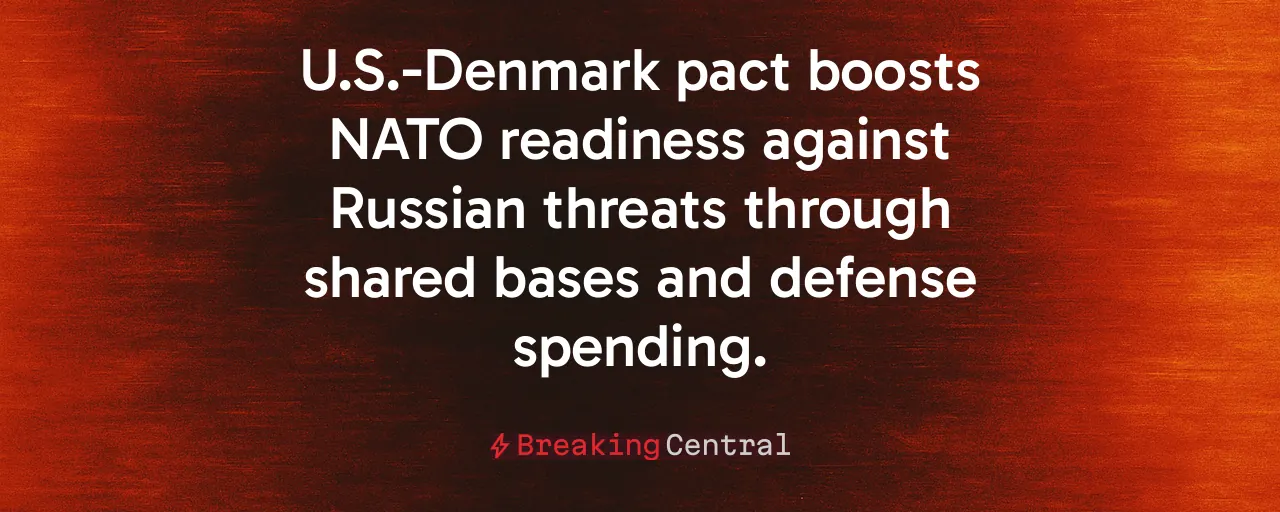A New Era of Allied Strength
On July 7, 2025, Secretary of State Marco Rubio welcomed Danish Foreign Minister Lars Løkke Rasmussen to Washington, marking a pivotal moment in transatlantic security. Their meeting celebrated the U.S.-Denmark Defense Cooperation Agreement, which took effect on July 1. This accord grants American forces access to three Danish air bases, signaling a renewed commitment to collective defense and reflecting a shared resolve to confront global threats head-on.
The agreement arrives at a critical juncture. Russia's aggression in Ukraine continues to destabilize Europe, while tensions in the Middle East demand steady leadership. Denmark's decision to open its bases and increase defense spending underscores a practical response to these challenges. It aligns with President Trump's call for NATO allies to shoulder greater responsibility, ensuring the alliance remains a bulwark against tyranny.
For Americans and Danes alike, this pact is a testament to the enduring value of freedom. It strengthens NATO's ability to deter adversaries and protect shared interests. By deepening military ties, both nations reaffirm their commitment to a world where sovereignty and security prevail over coercion.
Why Denmark's Move Matters
Denmark's defense agreement with the United States is no small feat. Ratified by the Danish parliament on June 11, 2025, after intense debate, it allows U.S. forces to use Aalborg, Karup, and Skrydstrup air bases for the next decade. This access bolsters NATO's ability to respond swiftly to threats in the Baltic Sea region, where Russian missile systems pose a growing danger to vital communication lines.
Denmark's pledge to raise defense spending to 2.4 percent of GDP by 2027, with aspirations toward NATO's new 5 percent guideline, sends a clear message. It rejects the complacency that has plagued some European allies, who have leaned heavily on American resources. This shift toward self-reliance strengthens the alliance's credibility and ensures that freedom-loving nations can stand firm together.
The agreement also fosters economic ties. Joint weapons production between U.S. and Danish firms promises to create jobs and drive innovation. By integrating defense industries, both nations can build a more resilient transatlantic security framework, one that prioritizes shared prosperity alongside military might.
Anchoring Freedom in Europe
The U.S.-Denmark pact is rooted in a long history of cooperation. Since joining NATO in 1949, Denmark has been a steadfast ally, from Cold War operations at Thule Air Base to joint missions in Afghanistan and Iraq. The 2025 agreement builds on this legacy, adapting to modern threats like Russian expansionism and Arctic instability.
President Trump's vision for NATO emphasizes 'cash, capabilities, and contributions.' Denmark's actions deliver on all three. Its rising defense budget, modernized F-35 squadrons, and willingness to host U.S. forces demonstrate a commitment to collective security. This contrasts with past European reluctance, where some allies lagged in meeting even the 2 percent GDP target.
Equally important is the message to Moscow. A stronger U.S. presence in Denmark, paired with rotational deployments in Norway and Poland, creates a robust deterrent. It signals that attempts to undermine European sovereignty will face unified resistance, reinforcing the principles of liberty and self-determination.
Navigating Global Challenges
The Rubio-Rasmussen talks also tackled pressing global issues. Ending the Russia-Ukraine war remains a priority, with both leaders advocating for a negotiated settlement that curbs Russian gains while securing Ukraine's future. This approach balances strength with pragmatism, aiming to restore stability without prolonging bloodshed.
In the Middle East, the U.S. and Denmark seek to counter volatility through coordinated diplomacy and defense. Denmark's role in NATO and its EU presidency in 2025 position it to bridge transatlantic and European efforts, fostering solutions that prioritize regional security and humanitarian needs.
Closer to home, the agreement addresses Arctic security. As Russia expands its northern presence, Denmark's strategic position makes it a key player in safeguarding this resource-rich region. Joint U.S.-Danish efforts to monitor and defend Arctic interests protect both national sovereignty and global trade routes.
Balancing Sovereignty and Strength
Some in Denmark worry that hosting U.S. forces could erode national sovereignty, particularly given American jurisdiction over its personnel. These concerns, voiced during 2025 parliamentary debates, reflect a natural desire to preserve autonomy. The agreement includes safeguards, such as parliamentary oversight and the exclusion of nuclear weapons, ensuring Denmark's values remain intact.
Economic and social impacts also spark discussion. While base communities anticipate job growth, some fear environmental strain or noise pollution. These challenges require transparent management, like joint U.S.-Danish oversight boards to address local concerns while maximizing the pact's benefits.
Greenland and the Faroe Islands, excluded from the agreement, remain sensitive topics. Past U.S. rhetoric about acquiring Greenland stirred unease, but the current accord focuses narrowly on mainland Denmark, respecting regional autonomy while advancing shared security goals.
A Model for Allied Resolve
The U.S.-Denmark defense pact sets a standard for NATO's future. It proves that allies can align their resources and resolve to confront shared threats. Denmark's commitment to higher spending and U.S. base access paves the way for other nations to follow, strengthening the alliance's foundation.
This partnership also highlights the power of principled cooperation. By prioritizing deterrence, economic integration, and diplomatic solutions, the U.S. and Denmark show that security and prosperity go hand in hand. Their work in Ukraine, the Middle East, and the Arctic offers a blueprint for addressing complex global challenges.
As threats evolve, the transatlantic bond remains a cornerstone of freedom. The courage to act, as Denmark has done, ensures that NATO stands ready to defend the values that define our shared future.
